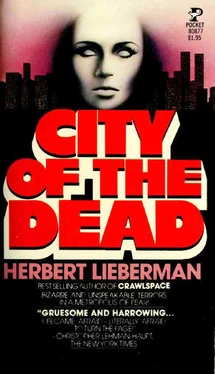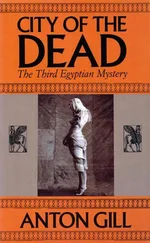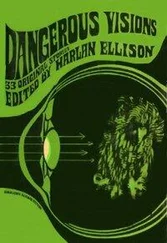“I’ve never been so goddamned brazen about it, like these guys.”
“Nothing wrong with a bit of glory,” Konig goes on, chuckling. “Good for the soul. And more important, the blood pressure. Glory has a salubrious effect on the blood pressure.”
“Your blood pressure won’t be too salubrious, my friend, now that Carslin’s report has hit the DA’s desk.” The high, shrill, accusatory thing is back in Benjamin’s voice. “Don’t expect any favors here.”
“I’m too old to expect favors, Maury.” Konig smiles wearily into the receiver. “When the DA is ready to see me, I’ll be there.”
There is a pause in which the two men listen to each other breathing through the receiver.
“Maury?”
“Paul?”
Their voices collide and halt but it is Benjamin who quickly takes up the slack. “Paul—don’t you want to tell me something?”
“No.”
“I don’t see why you should take the heat for some son of a bitch who did a sloppy job down there.”
“My sloppiness too. I never questioned the report.”
“You’ve got thousands of reports to process. How can you possibly question every one of them?”
Konig can now sense in the Deputy Mayor’s beseeching voice, in his thread of reasoning, an old friend already building a line of retreat for him. A way out. “Forget it, Maury. Who conducted what autopsy around here is strictly the Chiefs business and the Chief’s business only. That was one of Bahnhoff’s cardinal principles and it’s a good one. The man who did the PM on the Robinson boy is one of my deputies. I know what he did and I’ll deal with him in my own way—privately, in this office. But don’t expect to ever learn his name.”
There’s another pause in which Konig can hear the agitated breathing of the Deputy Mayor’s mounting fury.
“Okay, my friend,” Benjamin finally snarls. “That’s fine with me. Remember, I told you that Calvary was coming. Well, get that old crown of thorns out. It’s just about here. And when it comes I’m sure you’ll love every minute of it. God—you are a fool.”
Konig hunches wearily over the phone and nods his head. “You run your office, Maury. Let me run mine.”
“Well, quite frankly, my friend,” Benjamin snarls, “I don’t think you’ll be running yours too much longer. If you think your press was bad the other day, wait’ll you see tomorrow morning’s. I tried to keep Carslin quiet but the minute he saw those reporters he swung right into his Lincoln Steffens number—that ol’ muckrackers’ shuffle. That’s all I have to say. PS—the DA wants you down here Friday.”
“What for?”
“What for?” Benjamin starts to giggle a little insanely. “What for? Listen to the man. Oh, I can’t believe it. What for? Why, to have a cup of tea. Talk about the funnies. Swap dirty jokes. What would you think for?”
“What time does he want me there?” says Konig, wanting very much to get off the phone.
“Ten a.m.,” Benjamin shouts. “Repeat, ten a.m.—Friday. You be there, goddamn it,” Benjamin howls through the speaker. “What in God’s name was wrong with you up there today? My God—you looked awful.”
“Twenty-nine out of the full complement of thirty-two teeth gone. Fifteen of those old extractions, fourteen recent.”
“Postmortem?”
“No doubt. See how the bones healed in the old extractions and the sockets closed completely? Now look at the recent.”
“No clotting.”
“Right. And the sockets are still open. Those were yanked to make identification by charts impossible.”
3:20 p.m. Dental Lab, Medical Examiner’s Office.
Dr. Barnett Rossman, forensic odontologist, squints up at a series of freshly developed X rays illuminated on a scanner. The room in which the two men stand is full of skulls, jawbones, grinning dentures mounted on stands, plaster casts of jaws and mandibles with teeth set in them. And all around them teeth—thousands of teeth—and gold crowns, and the air reeking with the thick, smarting fumes of the hypo in the developing tanks.
“And something else,” Rossman goes on. “Those extractions were made with dental forceps, and by someone who knew how to use them.”
“Oh?” Konig’s brow cocks upward. “Anything else?” He scribbles something onto a pad under a list of general data headed “ROLFE.”
Rossman shrugs. “With only three teeth left in the jaws, there’s not a helluva lot to go on. And two of those three are just stumps—the upper left second premolar and the third molar. The other one—the lower right third molar—has a crown, but the tooth’s nearly completely destroyed by that large cavity you see there.”
Together the two men ponder the ghostly gray-white illuminations on the screen.
“But here’s something that might be of interest.” Ross-man jabs a pencil up toward one of the illuminated negatives. “Look at this area right here. See the gap? Upper left lateral incisor, canine, and first premolar?”
“It’s continuous,” says Konig, catching instantly the seed of an idea.
“Right. Would have been very obvious and very unsightly during life, unless—”
“—he wore a denture,” Konig says, completing the thought.
“A possibility. Probably a Nesbitt type. Lousy dentristry. Anyway, I took a few X rays of the upper left second premolar.”
“And?”
“Well, see for yourself.” Once more Rossman’s pencil jabs upward at something that looms on the screen like an immense Arctic ice floe seen through curling mists. “See how the convex surface of the stump is nearly level with the gum? There’s a complete root canal there. Has the appearance of having been recently ground with a dental drill.”
Konig glances away from the screen. “Meaning that at one time the stump might have carried a supporting clasp for a denture.”
“I’d say so.” Rossman beams. “I’d say very probably.” Konig scribbles hastily onto his pad. “Anything you can tell me about the age, Barney?”
Rossman sighs, removes his bifocals and set them carefully on the desk, then proceeds to slowly rub his eyes. “Well, all the wisdom teeth were erupted. Two of them shed for some considerable time. So he had to be over twenty-five years of age. Afraid that’s all I can offer you there.”
“Over twenty-five,” Konig murmurs aloud as he scribbles more notes. “Well, at least that gives me the lower range. I’ve got an upper range in my figures here of about forty to forty-five. Truth probably lies somewhere in between those limits, but I’d say more toward the upper.”
“What’d you get from the skull?”
Konig licks his thumb and flicks back several pages through the pad, his eyes skimming up and down the dirty, hectic scrawl there. Slowly, he starts to read &loud. “‘Cloture of sagittal, coronal, lambdoidal sutures nearly complete.’ That starts somewhere around age thirty. Then I found incipient cloture of the parietomastoid and squamous sutures on the inner surface. You don’t get that till somewhere between thirty-five and forty.”
“What about the limb bones?” asks Rossman.
Konig starts to mumble over his pad again. “‘Epiphyseal ends of all limb bones completely united.’ That takes place between twenty-two and twenty-five years. Which jibes with your minimum figure of twenty-five.”
“So you’re between twenty-five and forty-five, but leaning toward the upper limit?”
“Only because of the skull sutures and the amount of calcification at the epipyhses. There was also a great deal of ossification in the thyroid and cricoid cartilages, and osteoarthritic changes in the right hipbone—sacroiliac joint. Lipping changes in the cervical vertebrae. You don’t see that sort of thing until middle age. Poor bastard must have had some God-awful backaches. Also the entire thymus had turned to adipose tissue.”
Читать дальше












